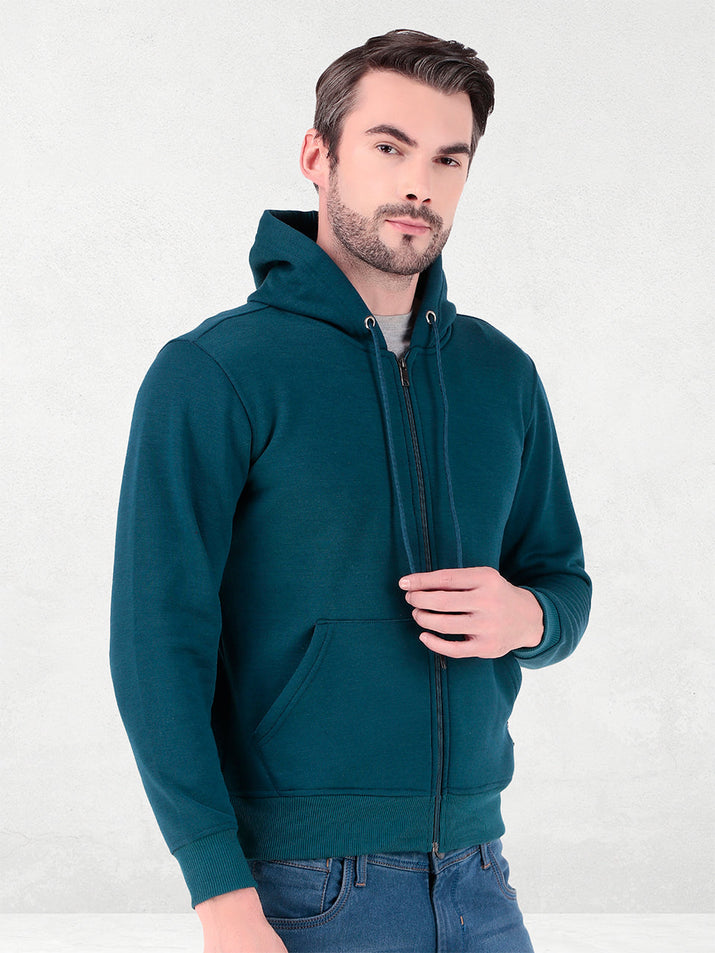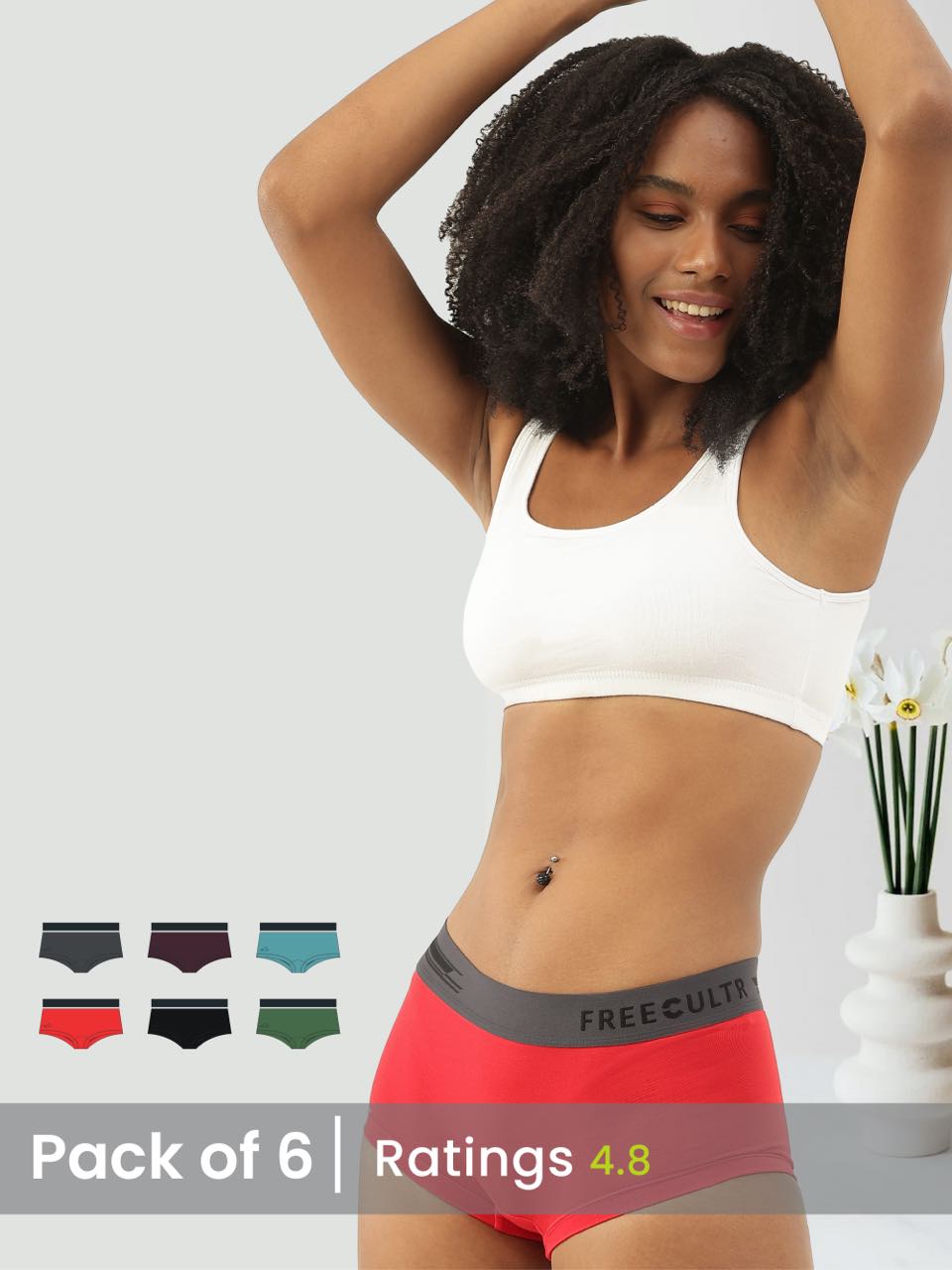Ignoring the critical role of an accurate underwear size chart often leads to daily discomfort, undermining confidence and even affecting the drape of outer garments. Many experience issues like restrictive waistbands, constant bunching, or excess fabric, which compromise both comfort and posture. With recent advancements in technical textiles and the increasing focus on inclusive sizing, understanding your precise measurements has never been more crucial. Modern brands now leverage sophisticated data to offer expanded size ranges and more anatomically correct fits than ever before. Properly fitting undergarments, whether breathable micro-mesh briefs or supportive seamless boxers, form the essential foundation for comfort and a polished appearance throughout your day, transforming daily wear from an irritation into an unseen advantage.

The Unseen Hero: Why Underwear Fit Is More Crucial Than You Think
Ever pull on a pair of undies only to feel a little… off? Maybe they’re digging in, riding up, or just generally feeling like they’re fighting against you all day long. It's easy to dismiss it. the truth is, the fit of your underwear plays a massive role not just in your comfort. also in your overall well-being and confidence. Think about it: it’s the first thing you put on in the morning and the last thing you take off at night.
Beyond the obvious discomfort, ill-fitting underwear can lead to a surprising array of issues. For starters, too-tight elastic can restrict circulation, especially around the waist and groin, which isn't ideal for anyone. Then there's the dreaded chafing and skin irritation – something many of us have experienced with a pair that constantly rubs in the wrong places. This can lead to rashes, ingrown hairs. even yeast infections, particularly for women, due to restricted airflow and moisture buildup. On the flip side, underwear that’s too loose can bunch up, create unflattering lines under clothing. just make you feel generally sloppy. Nobody wants to be adjusting their underwear constantly throughout the day!
I remember a time when I thought all underwear was pretty much the same. I'd grab whatever was on sale, assuming a "medium" was a "medium." Boy, was I wrong! I ended up with a drawer full of undies that either pinched or sagged. It wasn't until I started paying attention to the specific underwear size chart for each brand that I truly understood the difference a proper fit makes. It was like night and day – not only did I feel more comfortable. my clothes looked better. I even felt a subtle boost in confidence knowing I was perfectly supported all day.
Your Personal Tailor: How to Measure for Your Perfect Fit
Alright, let’s get down to brass tacks. The secret weapon in finding your perfect fit isn't magic; it's a measuring tape! Most underwear size charts rely on one or two key measurements. Don't worry, it's super easy. you probably already have everything you need.
Here’s what you’ll need to measure:
- A soft tape measure (the kind tailors use, not a retractable metal one).
- A mirror can be helpful. not essential.
- Wear light clothing, or nothing at all, for the most accurate results.
Step-by-Step Measuring Guide:
- Waist Measurement This is crucial for men’s underwear and often a factor for women's. Find your natural waistline. This is typically the narrowest part of your torso, just above your belly button. Wrap the tape measure around your waist, making sure it's snug but not tight – you should be able to fit one finger underneath. Breathe naturally, don’t hold your breath or suck in.
- Hip Measurement This is especially crucial for women’s underwear and also for men's boxer briefs or looser styles. Stand with your feet together. Wrap the tape measure around the fullest part of your hips and buttocks. Again, keep the tape parallel to the floor and snug. not digging in.
- Thigh Measurement (Optional. Recommended for Boxer Briefs/Trunks) For styles that extend down the leg, like boxer briefs or trunks, measuring your thigh can prevent uncomfortable constriction. Measure around the fullest part of your thigh, just below your crotch.
Pro Tip: Write down your measurements immediately! Keep them handy for when you're shopping online or comparing different underwear size chart options.
Cracking the Code: Understanding the Underwear Size Chart
So, you’ve got your numbers. Now what? It’s time to consult the underwear size chart. This is where the magic happens, connecting your measurements to the brand’s specific sizing. While there's no universal standard (we'll dive into that more later!) , most charts follow a similar format.
Here’s an example of what a typical underwear size chart might look like, though remember, these numbers are illustrative and will vary greatly by brand:
| Size | Men's Waist (Inches) | Women's Waist (Inches) | Women's Hips (Inches) |
|---|---|---|---|
| Small (S) | 28-30 | 24-26 | 34-36 |
| Medium (M) | 31-33 | 27-29 | 37-39 |
| Large (L) | 34-36 | 30-32 | 40-42 |
| Extra Large (XL) | 37-39 | 33-35 | 43-45 |
| 2XL | 40-42 | 36-38 | 46-48 |
When looking at an underwear size chart, you'll typically find two main types of sizing conventions:
- Alpha Sizing (S, M, L, XL) This is very common and usually corresponds to a range of waist and/or hip measurements.
- Numerical Sizing (28, 30, 32, etc.) Often seen in men's underwear, these numbers usually directly correspond to waist measurements in inches.
Find your measurements on the chart. see which size range they fall into. If you're between sizes, it's often recommended to go for the larger size for comfort, especially with underwear, as too-small can be very uncomfortable and unflattering.
Tailoring for Guys: Men's Underwear Sizing Demystified
For men, the primary measurement when consulting an underwear size chart is almost always the waist. But, the style of underwear you prefer can subtly influence how that measurement translates to fit.
- Briefs These classic undies primarily rely on waist measurement. A good fit means the waistband sits comfortably without digging in. the leg openings don't pinch.
- Boxers Since boxers are designed for a looser fit, your waist measurement will guide you. there's more leeway. The key is comfort around the waist and enough room in the legs for unrestricted movement.
- Boxer Briefs & Trunks These are where thigh measurements can become more relevant. While the waist is still crucial, if your thighs are particularly muscular, you might find a larger size necessary to prevent the leg openings from rolling up or cutting off circulation. A good pair of boxer briefs should hug the leg without feeling restrictive.
- Jockstraps Primarily based on waist size, ensuring the waistband sits securely and the pouch offers adequate support without compression.
Remember that different fabrics also play a role. A cotton boxer brief might have less stretch than one made from a modal or synthetic blend, meaning the same measured size could feel different across materials.
Finding Your Perfect Pair: Women's Underwear Sizing Insights
Women's underwear sizing often involves both waist and hip measurements, as the variety of styles means different parts of the garment are more critical for fit. Always refer to the specific underwear size chart provided by the brand you're considering.
- Bikini & Hipster These styles sit lower on the hips. Both hip and waist measurements are essential to ensure the waistband doesn't pinch and the leg openings are comfortable.
- Thong & G-String While minimalistic, the fit around the hips and waist is still crucial to prevent digging or rolling. Hip measurement is key here.
- High-Waist & Briefs These offer more coverage and typically sit at or above the natural waist. Both waist and hip measurements are vital to ensure full coverage without sagging or tightness.
- Boy Shorts Similar to men's boxer briefs, the hip and thigh measurements are vital to ensure the leg openings don't ride up or restrict movement.
Beyond basic sizing, consider the "rise" of the underwear (how high it sits on your torso) as part of finding your perfect fit. A low-rise pair in your "correct" size might still feel uncomfortable if you prefer more coverage. vice-versa. For maternity underwear, many brands offer specific sizing that accounts for a growing belly, often based on your pre-pregnancy size or current hip measurements.
The "Goldilocks" Moment: How to Know When the Fit is Just Right
You’ve measured, you’ve checked the underwear size chart. you’ve bought a pair. Now, how do you know if you've hit the jackpot? It’s all about feel and appearance. Your underwear should be like a second skin – supportive, present. never intrusive.
Signs of a Perfect Fit:
- Invisible Comfort You barely notice you’re wearing them. No pinching, pulling, or bunching.
- Smooth Silhouettes No visible panty lines (VPL) where you don't want them. no bulging or sagging under your clothes.
- Freedom of Movement You can move, stretch. sit without your underwear riding up, rolling down, or restricting your natural range of motion.
- Even Pressure The elastic sits flat against your skin without leaving deep red marks.
- Breathability Adequate airflow, especially in the crotch area, to prevent moisture buildup.
Signs of a Poor Fit (Time to Re-Evaluate Your Underwear Size Chart Choice!) :
- Digging In The waistband or leg openings are leaving deep red marks on your skin. This is a clear sign they're too small.
- Sagging or Bunching If your underwear is baggy, wrinkles excessively, or rides up constantly, it's likely too large.
- Constant Adjusting If you find yourself constantly tugging, pulling, or shifting your underwear, the fit is off.
- Chafing or Irritation Any rubbing, soreness, or skin irritation is a major red flag.
- Visible Lines & Bulges If your underwear creates unflattering lines or bulges under your clothes, it’s not fitting smoothly.
The Brand Gamble: Why Every Underwear Size Chart is Unique
This is perhaps the most vital takeaway: there is no universal underwear size chart. A "Medium" from one brand can be vastly different from a "Medium" from another. This is due to variations in manufacturing, target demographic, fabric choices. even regional sizing conventions.
Think of it like jeans. You might be a size 30 in one brand and a 32 in another. The same principle applies to underwear. This is why it’s absolutely critical to:
- Always Check the Brand’s Specific Underwear Size Chart Don't assume. Before you click "add to cart," navigate to the product page and look for their unique sizing guide. It's usually linked near the size selection dropdown.
- Read Reviews Online reviews can be goldmines for sizing insights. Many customers will mention if an item runs "true to size," "small," or "large," and some might even share their measurements and what size worked for them.
- comprehend Return Policies Unfortunately, due to hygiene reasons, many retailers have strict no-return policies on underwear once opened or tried on. This makes getting the size right the first time even more crucial. Some brands, But, do offer a "first pair guarantee" where you can return or exchange the first pair if it doesn't fit.
Fabric & Style: Beyond the Numbers on the Underwear Size Chart
While measurements are fundamental, the material and cut of your underwear also heavily influence how a given size feels and performs.
- Cotton Breathable and absorbent. often has less stretch. A pure cotton pair might feel snugger than a blend in the same size.
- Modal/MicroModal Incredibly soft, breathable. has excellent stretch and recovery. Underwear made from modal often feels light and luxurious, adapting well to your body.
- Synthetics (Nylon, Spandex, Polyester) Offer great stretch, moisture-wicking properties. durability, especially for athletic wear. They can provide a more compressive or supportive fit.
- Bamboo Similar to modal, bamboo fabric is soft, breathable. often has natural antibacterial properties. It offers good stretch.
The amount of spandex or elastane in a fabric blend will significantly impact its stretch. A higher percentage means more give, which can be forgiving if you're between sizes or if your measurements fluctuate slightly.
Different cuts also inherently feel different. A thong, by its nature, will have a different "feel" than a full brief, even if both are technically the "correct" size according to the underwear size chart. Consider what kind of coverage and support you prefer for different activities and outfits.
Your Action Plan: Finding Your Perfect Undies Every Time
You’re now equipped with the knowledge to conquer the underwear aisle (or website!). Here are your actionable takeaways to ensure maximum comfort and confidence:
- Measure Yourself Regularly Our bodies change! A few pounds gained or lost, a shift in muscle mass – all can impact your measurements. Re-measure yourself every 6-12 months.
- Don’t Assume Your Size Your size in jeans or shirts doesn’t automatically translate to underwear. Always refer to the underwear size chart.
- Prioritize the Brand's Chart This cannot be stressed enough. The generalized charts are helpful starting points. the brand's specific underwear size chart is your bible for that particular product.
- Read Those Reviews Especially for online purchases, customer reviews often offer invaluable insights into how the sizing actually runs for a specific style or fabric.
- Consider Multipacks for Exploration If you're trying a new brand or style, sometimes purchasing a smaller multipack can be a cost-effective way to test the waters before committing to a larger quantity.
- Comfort Over Everything While aesthetics are great, when it comes to underwear, comfort should always be your top priority. You're wearing this garment directly against your most sensitive areas for hours on end.
Conclusion
Finding your perfect underwear fit truly transforms daily comfort and confidence. It's not just about a label; it's about understanding your unique body measurements and how different styles, from supportive briefs to relaxed trunks, interact with them. My own journey taught me that a quick measurement refresh can prevent a day of discomfort, especially with newer seamless designs that demand precision for their intended "second skin" feel. Don't be afraid to consult that size chart for every new brand or style you consider, as consistency varies. Embracing the right fit is a simple yet powerful act of self-care. It ensures that your foundation feels as good as it looks, empowering you from the moment you get dressed.More Articles
Inner Wear – Foundation of Comfort & ConfidenceTrunks for Men – Superior Comfort & Flexible Fit
Brief – Seamless Fit & Everyday Functionality
Men's Brief – All-Day Support & Breathable Comfort
FAQs
Why bother with an underwear size chart?
It's crucial for your comfort! A good fit prevents chafing, keeps your underwear from riding up or sagging. ensures it lays smoothly under your clothes, helping you feel great all day.
How do I actually measure myself for underwear?
You'll typically need to measure your natural waist (the narrowest part of your torso). your hips (the fullest part of your bottom). Some styles might also require a 'rise' measurement. Use a soft tape measure and make sure it's snug but not tight against your skin.
My measurements are between two sizes on the chart. What should I do?
If you're stuck between sizes, it's generally better to go with the larger size for underwear. This helps avoid pinching, digging. discomfort, especially with materials that don't have a lot of stretch.
Is there a difference between men's and women's underwear size charts?
Absolutely! Men's charts usually focus primarily on waist size, while women's charts often include both waist and hip measurements due to different body shapes and the variety of styles available. Always check the specific chart for the gender and brand you're buying from.
Does the type of fabric affect which size I should pick?
Yes, definitely! Stretchy fabrics like spandex blends or modal might be more forgiving, whereas non-stretch materials like pure cotton need a more precise fit. Compression underwear will also feel tighter by design, so always consider the fabric's properties and the intended fit.
I always just guess my size. Why is using a chart better?
Guessing often leads to ill-fitting underwear that can be uncomfortable, bunch up, or dig into your skin. Using a size chart ensures you get the perfect fit, maximizing comfort, preventing issues like visible panty lines. making you feel more confident.
How often should I re-measure myself?
It's a good idea to remeasure yourself periodically, especially if your weight has fluctuated, you've started a new fitness routine, or your body shape has changed. Even once a year can help ensure your underwear drawer is full of comfortable, well-fitting pieces.






